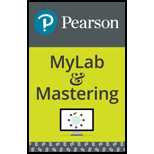
Concept explainers
(a)
Interpretation:
Whether the decomposition of water by electricity is a physical or a chemical property is to be stated.
Concept introduction:
The change in the physical property of a substance is known as a physical change, which is reversible in nature.
The change in the chemical property of a substance is known as a chemical change, which is reversible in nature.
(b)
Interpretation:
Whether the floating of ice on water is a physical or chemical property is to be stated.
Concept introduction:
Chemical reactions are the rearrangement of atoms, molecules or ions to form other chemical substances. Chemical changes are of two types: physical change and chemical change.
The change in the physical property of a substance is known as a physical change, which is reversible in nature.
The change in the chemical property of a substance is known as a chemical change, which is irreversible in nature.
(c)
Interpretation:
Whether the fizzing of potassium metal in water is a physical or a chemical property is to be stated.
Concept introduction:
Chemical reactions are the rearrangement of atoms, molecules or ions to form other chemical substances. Chemical changes are of two types: physical change and chemical change.
The change in the physical property of a substance is known as a physical change, which is reversible in nature.
The change in the chemical property of a substance is known as a chemical change, which is irreversible in nature.
(d)
Interpretation:
Whether the dissolution of acetone in water is a physical or a chemical property is to be stated.
Concept introduction:
Chemical reactions are the rearrangement of atoms, molecules, or ions to form other chemical substances. Chemical changes are of two types: physical change and chemical change.
The change in the physical property of a substance is known as a physical change, which is reversible in nature.
The change in the chemical property of a substance is known as a chemical change, which is irreversible in nature.
Want to see the full answer?
Check out a sample textbook solution
Chapter 3 Solutions
EP INTRODUCTORY CHEM.-MOD.MASTERINGCHEM
- Using spheres to represent individual atoms, sketch particulate illustrations of a substance as it is heated from the solid to the liquid and to the gaseous state.arrow_forwardClassify the following as a physical property or a chemical property. (a) Copper metal has a red-orange metallic luster. (b) Copper metal has a density of 8.94 g/cm3 (c) Copper metal and chlorine gas produce CuCl2arrow_forwardClassify each property as physical or chemical. (a) the tendency of copper to turn green when exposed to air(b) the tendency of automobile paint to dull over time(c) the tendency of gasoline to evaporate quickly when spilled(d) the low mass (for a given volume) of aluminum relative to other metalsarrow_forward
- Classify each change as physical or chemical. (a) the explosion of gunpowder in the barrel of a gun(b) the melting of gold in a furnace(c) the bubbling that occurs when you mix baking soda andvinegar(d) the bubbling that occurs when water boilsarrow_forwardWhich of the following is the correct description of theinside of a grapefruit?(a) It is a pure compound.(b) It consists of a homogeneous mixture of compounds.arrow_forwardState whether the following properties of matter arephysical or chemical.(a) An iron nail is attracted to a magnet.(b) A piece of paper spontaneously ignites when itstemperature reaches 451 °F.(c) A bronze statue develops a green coating (patina)over time.(d) A block of wood floats on water.arrow_forward
- 7. State whether each of the following represents a chemical change or merely a physical change:(a) A few grams of sucrose (table sugar) are placed in a small beaker of deionized water; the sugar crystals “disappear,” and the liquid in the beaker remains clear and colorless.(b) A copper statue, over time, turns green.(c) When a teaspoon of baking soda (sodium bicarbonate) is placed into a few ounces of vinegar (acetic acid), volumes of bubbles (effervescence) are produced.arrow_forwardClassify each property as physical or chemical. (a) the tendency for platinum jewelry to scratch easily(b) the ability of sulfuric acid to burn the skin(c) the ability of hydrogen peroxide to bleach hair(d) the density of lead relative to other metalsarrow_forwardClassify each change as physical or chemical. (a) A balloon filled with hydrogen gas explodes upon contactwith a spark.(b) The liquid propane in a barbecue evaporates away becausesomeone left the valve open.(c) The liquid propane in a barbecue ignites upon contactwith a spark.(d) Copper metal turns green on exposure to air andwater.arrow_forward
- Which of the following is best characterized as a heterogeneous mixture? Group of answer choices (a) Air (b) Sandy Dirt (c) An aqueous solution of NaCl (d) Electrum (an alloy of gold and silver) (e) Clear Diamondarrow_forwardDefine physical change and chemical change. State which type of change occurs in each of the following statements: (a) Passing an electric current through molten magnesium chloride yields molten magnesium and gaseous chlorine. (b) The iron in discarded automobiles slowly forms reddish brown, crumbly rust.arrow_forwardClassify each of the following changes as physical or chemical: (a)condensation of steam(b) burning of gasoline(c) souring of milk(d) dissolving of sugar in water(e) melting of gold (f) coal burning(g) ice melting(h) mixing chocolate syrup with milk(h)explosion of a firecracker(j)magnetizing of a screwdriverarrow_forward
 Introductory Chemistry: An Active Learning Approa...ChemistryISBN:9781305079250Author:Mark S. Cracolice, Ed PetersPublisher:Cengage Learning
Introductory Chemistry: An Active Learning Approa...ChemistryISBN:9781305079250Author:Mark S. Cracolice, Ed PetersPublisher:Cengage Learning
